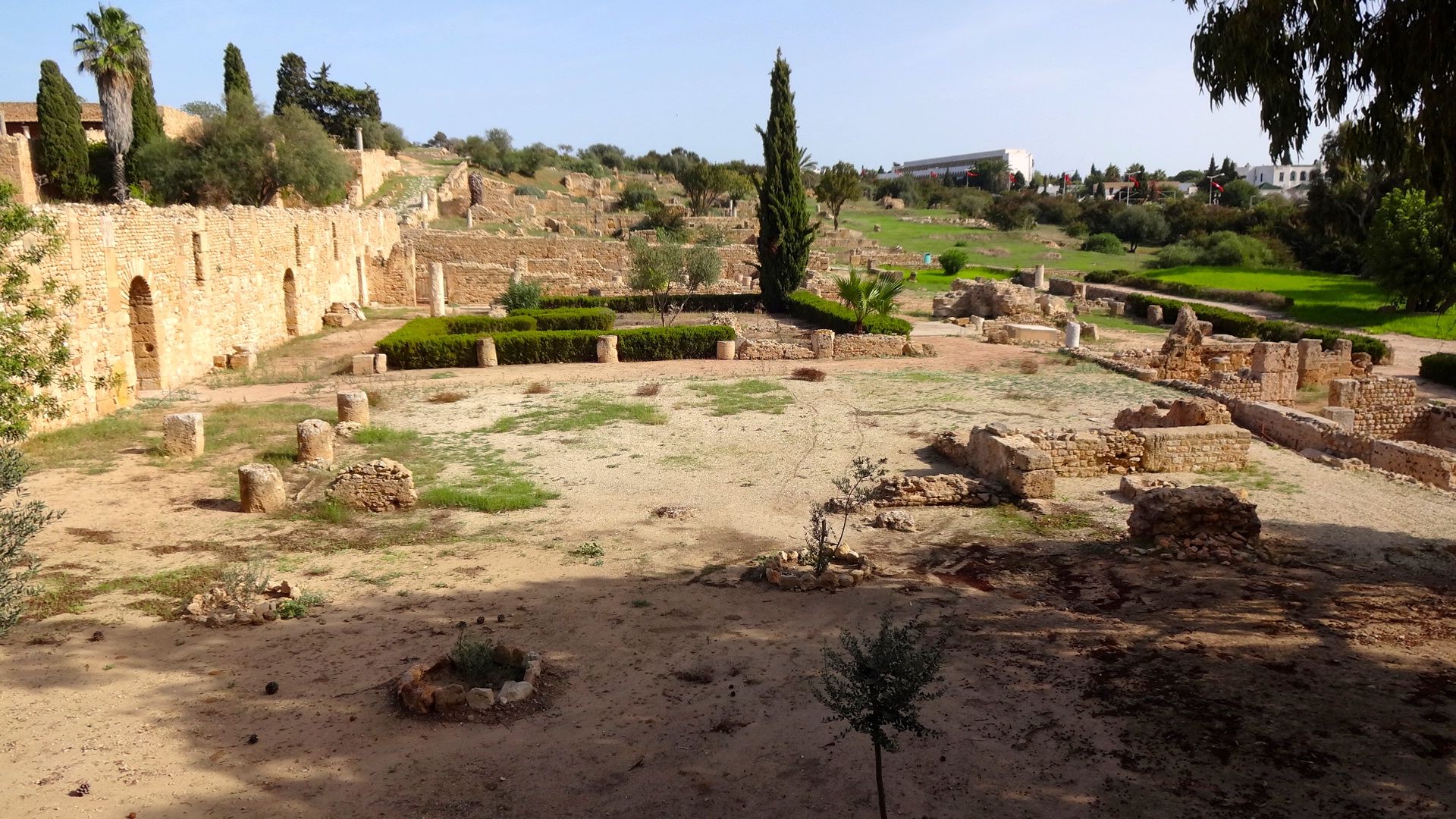Carthago delenda est
Carthage, Tunisia
"...and Carthage must be destroyed." -- Cato the Elder (234–149 BCE)
And the Romans delivered on Cato's recommendation and performed a very thorough job following the Third Punic War. The few ruins of Carthage that are left and preserved are spread out and separated by modern Tunis buildings and government palaces and sites. The ruins that now exist are principally Roman, built on the Punic foundations. But Roman buildings too were destroyed, first by the Byzantines building their own city and later by the Vandals, the Berbers, the Arabs, and by time.
There's little to see of Carthage and it's a shame. I had hoped for more and found more, just not in Carthage. I found the ruins I was looking for elsewhere throughout Tunisia, and those finds will be discussed in another post. First, Carthage...
Carthage was a sea power at the time. It hired mercenary armies for land warfare. Its Triremes ruled the seas until Rome managed to produce enough copies and field enough oarsmen and sailors to overpower the Carthaginians. What interested me about Carthage the most were the two ports they created that still exist today. One was the commercial port where Carthage imported and exported materials and wares throughout the Mediterranean. The other port was the military port. It is a horseshoe-shaped port with an island in the middle. The island housed a circular boat house where the 80 or so Triremes were kept and maintained. At a moment's notice, Carthage could shoot out many boats to attack and sink its enemy ships.





On land, Carthage ruled a large area, including portions of Sicily, Libya, and large areas of North Africa. Until Rome decided to wipe out its main competitor and potential adversary, that is. Following the Third Punic War, Rome utterly destroyed Cartage. There's little left. These shots from various areas within Carthage. Most of these ruins are Roman in origin, although the building materials mostly came from Punic materials underlying these structures.







After spending a few hours exploring what Carthage had to offer, it was time to go sightseeing around the Tunis area. I'd have to wait for one of my two day-trips out of Tunis to discover the real history of the Carthaginian-Roman conflict.




